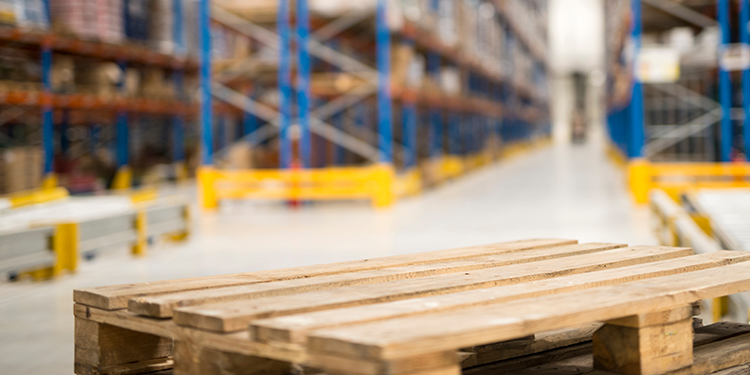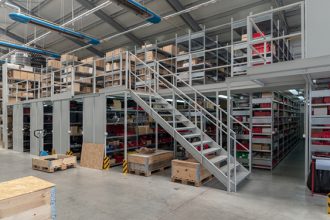Can A Damaged Rack Be Repaired While Still Loaded?

Upon discovering that damage has occurred to industrial steel storage rack, the best practice is to immediately remove the structure from service and safely unload all stored pallet loads. This significantly reduces the risk of a collapse and the potential for subsequent injury to employees and damage to product caused.
However, as noted in section 9.4 of the recently updated Guideline for the Assessment and Repair or Replacement of Damaged Rack — Version 2.0, published by RMI, it is sometimes possible to repair a damaged rack while it is still loaded. The determination about the appropriateness of this course of action should be made by a qualified storage rack design engineer, engaged to assess the damage and make recommendations for the safest repair.
Per the Guideline, in certain situations a jack can be attached to the rack column above the damaged section to temporarily relieve the damaged upright of the load. With the jack secured in place, the work required to repair the rack can be completed without unloading product.
For safety, the jack and its attachment to the column must have a capacity rating capable of supporting the actual load on the rack structure. Further, the jack device itself must be designed and validated for such an application by the supervising engineer.
Additionally, the Guideline notes two special considerations when assessing the suitability of such a procedure prior to utilizing a jack:
- Floor conditions need to be considered when selecting a jacking method. For example, jacks that rely on friction to remain in place might not be appropriate for certain floor conditions.
- When a front column is supported by a jack and the existing bracing sections are removed to install a repair kit, the rear column’s unsupported height could increase significantly, which could reduce its capacity. The supervising engineer would need to evaluate the load that the unbraced rear column will have to support during such a repair.
To learn more about rack repair best practices, download RMI’s Guideline for the Assessment and Repair or Replacement of Damaged Rack — Volume 2.


